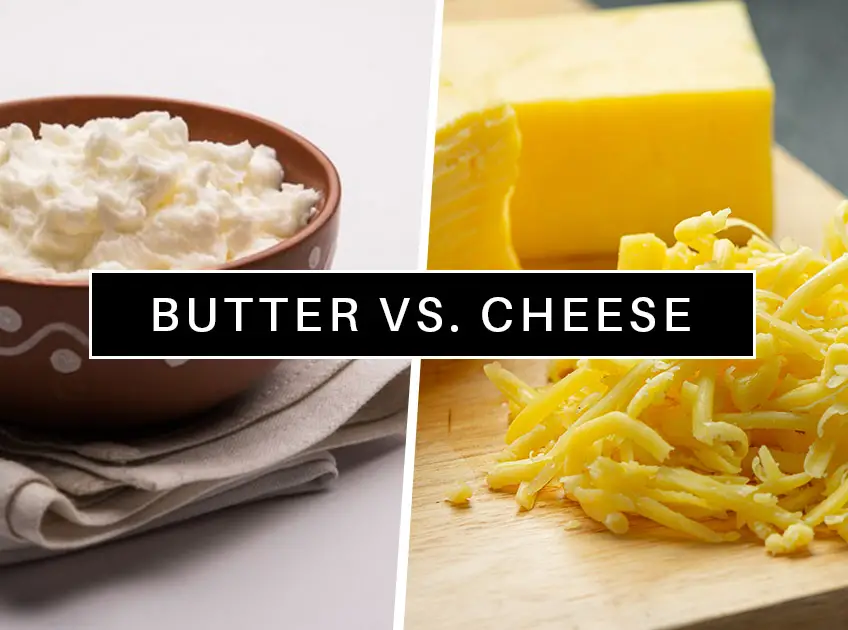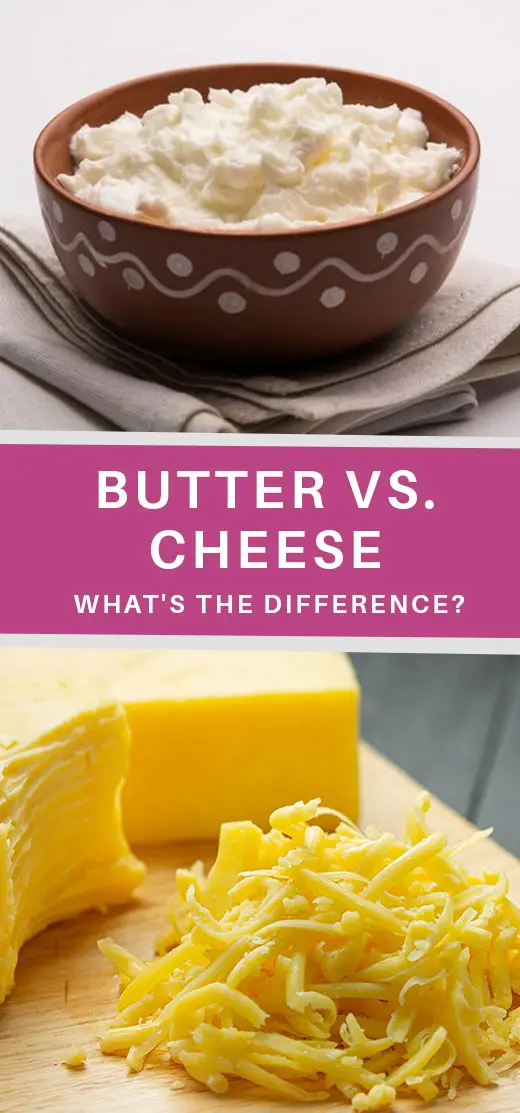
Important: This article is for informational purposes only. Please read our full disclaimer for more details.
Have you ever wondered what the difference is between cheese and butter? Both dairy products are delicious and have many uses, but they actually have quite different nutritional profiles. This article will explore the difference between these two staples in your kitchen.
Cheese is a dairy product that is made from curdled milk. The process of making cheese involves adding rennet, which is an enzyme, to milk in order to curdle it. Once the milk has curdled, the solid parts (curds) are separated from the liquid (whey) and are then pressed and molded into the desired shape. Cheese can be made from cow’s milk, goat’s milk, or sheep’s milk.
Article Contains
Butter is also a dairy product that is made from cream. The process of making butter involves churning cream until it reaches a solid state. Butter is typically made from cow’s milk, but it can also be made from goat’s milk or sheep’s milk.
So, what is the difference between these two dairy products? Let’s take a closer look.
Difference Between Cheese And Butter

1. Uses & Benefits
Cheese can be used in a variety of ways. It can be eaten on its own, used as a ingredient in cooking, or added to dishes as a topping. Cheese also has a number of health benefits. For example, cheese is a good source of protein and calcium, both of which are important for bone health. Additionally, cheese contains conjugated linoleic acid (CLA), which is a type of fatty acid that has been linked to a number of health benefits, including weight loss and reduced inflammation.
Butter can also be used in a variety of ways. It can be spread on bread, used as a cooking fat, or added to dishes for flavor. Butter also has a number of health benefits. For example, butter is a good source of Vitamins A and E, both of which are important for skin health. Additionally, butter contains conjugated linoleic acid (CLA), which is a type of fatty acid that has been linked to a number of health benefits, including weight loss and reduced inflammation.
2. Nutritional Profile
Cheese and butter both have a high fat content. However, cheese also contains a significant amount of protein and calcium, while butter is a good source of Vitamins A and E.
3. Recommended Intake
The recommended intake for cheese is 1-2 ounces per day, while the recommended intake for butter is 1-2 tablespoons per day.
4. Disadvantages
While cheese and butter both have a number of health benefits, there are also some disadvantages to consider. For example, cheese is high in saturated fat, which can increase your risk of cardiovascular disease if consumed in excess. Additionally, cheese is high in sodium, which can lead to water retention and bloating.
Butter also has a few disadvantages to consider. For example, butter is high in saturated fat, which can increase your risk of cardiovascular disease if consumed in excess. Additionally, butter contains cholesterol, which can also contribute to heart disease.
Conclusion
Cheese and butter are both delicious dairy products with a variety of uses. However, they have different nutritional profiles and recommended intakes. Additionally, there are some disadvantages to consider before consuming either cheese or butter in excess. Ultimately, the best way to enjoy these foods is in moderation as part of a healthy diet.
Also, check:
- Difference Between Sweet Cream And Butter
- Difference Between Unrefined And Refined Shea Butter
- Difference Between Body Butter And Lotion
- How to Use Cocoa Butter for Scars?
- Difference Between White And Yellow Shea Butter
- Difference Between Beard Balm And Beard Butter
- Does Tanning Lotion Expire?
- Difference Between Coconut Oil And Coconut Butter
- How to Use Cocoa Butter for Stretch Marks?
- How to Use Shea Butter for Acne?
- 10 Foods That Are High in Vitamin K2
















